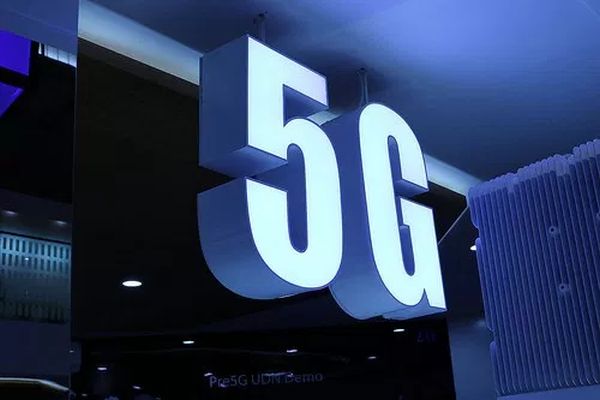
by Editor | May 25, 2021 | Investing, Markets, Technology
 By Rituraj Baruah,
By Rituraj Baruah,
Taipei (Taiwan) : While it pushes 5G in the global markets in 2018, mobile chipset maker MediaTek will, in India, continue to focus on the 4G segment, David Ku, the firm’s Chief Financial Officer, has said.
“Globally, the company is likely to invest the highest on fifth generation (5G) connectivity, followed by the 4G segment,” Ku told IANS in an interview.
“4G is definitely for India. 5G is, arguably, for India as well, but not in the next year,” he said, adding, however, that in the next two to three years the chipset maker would bring 5G to the country.
He said the automotive segment would be next in their global priority list followed by Application-Specific Integrated Circuit (ASIC).
In 2018 and 2019, 5G would be pertinent for China, the US, Europe and Japan, among others.
The company had on June 5 announced that it would commercially deploy its first 5G modem “Helio M70” in 2019, and some of its key partners would be Nokia, NTT DoCoMo and Huawei.
Talking about MediaTek’s business in the country, Ku, who is also the Senior Corporate Vice President of the company, said revenue from India is about 10-15 per cent of the overall revenue and, in 2017, the growth rate “was very good”, given the low base of the company in the country.
MediaTek’s current market share in India is around one-third and the company is trying to be the market leader, Ku said.
On the outlook for the current year, he emphasised: “Growth rate is definitely double-digit for India in 2018.”
In 2017, however, the global performance of the company slowed on a year-on-year basis, he said, adding that, on a quarterly observation “from Q3 (July-September) of last year, the performance started recovering”.
“I think, in general, last year we did okay, but profitability-wise (it went down), due to our product portfolio… especially on the smartphone side”, leading to loss of some market share in China.
“Our market share in China alone is around 40-45 per cent, but last year it was down to 30 (per cent), but this is we have come back to 40-45 per cent… and want to maintain that level.”
MediaTek is currently listed on the Taiwan Stock Exchange and asked about its plans of listing in other exchanges, Ku said: “Currently we don’t have any plans for listings.”
The financial performance of the modem maker in the current fiscal has been as per the guidance, the CFO informed.
“For the first quarter we were basically in line with our guidance, for the second quarter… we have not closed the quarter, but in general it is in line with our guidance.”
“The topline guidance on a quarter-on-quarter basis is to grow 12-20 per cent for the second quarter. I think we should be looking for a mid-high of this range…which means it is pretty good,” he added.
(Rituraj Baruah was in Taipei at the invitation MediaTek. He can be contacted at rituraj.b@ians.in)
—IANS

by Editor | May 25, 2021 | Business, Emerging Businesses, Markets, Technology
 Seoul : Samsung Electronics Co. said on Monday it is hosting a gathering of the 3rd Generation Partnership Project (3GPP) throughout this week to enable business representatives to exchange views on the commercialization of the fifth-generation (5G) network.
Seoul : Samsung Electronics Co. said on Monday it is hosting a gathering of the 3rd Generation Partnership Project (3GPP) throughout this week to enable business representatives to exchange views on the commercialization of the fifth-generation (5G) network.
At the meeting, officials from South Korea’s three mobile carriers, SK Telecom Co., KT Corp. and LG Uplus Corp., as well as international partners like Verizon Wireless, AT&T and NTT DOCOMO, gathered to discuss ways to set up 5G-network services, Yonhap news agency reported.
“The first 5G standard, which includes innovative technologies developed by Samsung Electronics, will be completed at this 3GPP conference,” the company said.
“This will lead the market to commercialize 5G communication to serve as the core infrastructure for the coming fourth industrial revolution,” it added.
Samsung said the participants at the gathering will confirm the final technologies for 5G commercialization.
“These include 5G wireless access technology providing ultra-high speed data and ultra-low latency and the conformance testing method for 5G terminals,” the tech giant added.
—IANS

by Editor | May 25, 2021 | Markets, Networking, Technology
 By Faisal Kawoosa,
By Faisal Kawoosa,
The era of 5G of mobile networks will not simply be about more throughput and speeds. These are obvious outcomes. The real power of 5G will be in unleashing connectivity among the unconnected — and “unconnected” will not primarily mean people. 5G will not be providing solutions to reach out to the lowest strata of society that remains to be “connected”. So, do not expect 5G to help widen the user base.
The essence of 5G is about creating a mesh between humans and things. While it will continue to enhance the communication experiences of humans with humans, the main focus of the technology will be on creating channels of communication for things-to-things and humans-to-things. This is why Internet of Things (IoT) is the centrepiece of the 5G era.
There is already a lot of literature from technology creators like Qualcomm, Ericsson and others on the characteristics of 5G as well as IoT. And India too will follow the global trend where the initial 5G technology implementation will mean integrating and connecting objects with humans.
Smartphones will undeniably retain their relevance in the 5G era. They will remain the default interface between humans and the connected environment around. However, what will excite the entire value chain, in terms of displaying of technology innovations, business opportunities and creating value out of the communications infrastructure, will predominantly be other connected and smart devices and gadgets.
This will trigger an upgrade in terms of specifications of smartphones so that users actually use the technology embedded in the infrastructure and other bits. What will excite everyone down the value chain will be the integration of technology and intelligence running over it through artificial intelligence (AI) and other such interventions.
This will mean greater excitement around the launch and display of what is referred to as “ConnectedX” (a bouquet of devices that would get connected in due course of time).
In the Indian context, smartphones have been exciting the market for around a decade now. However, in the coming decade, smartphones alone will not steal the limelight. There will be more connected devices and gadgets — including some that we have not even visualised yet — and all of them will be propelled by the underlying 5G power.
This means that companies showcasing solutions around IoT based on 4G connectivity will actually have to speed up to launch their 5G-based solutions in the next couple of years.
We saw the smartphone trend eventually leading to 4G and becoming the default cellular connectivity in just a span of three years; it is highly likely that “IoTification” will predominantly happen through 5G, and 4G connectivity may remain relevant for just a couple of years in that era.
While the media and other channels of promotion in future will not see the same interest in the launch of smartphones, the ecosystem in India — especially home-grown handset makers — have to align their strategic roadmap to remain in the business for the next decade.
The R&D capabilities of these brands in smartphones were limited and restricted. However, it is time for them to prepare for the long-haul and get set for the coming 5G opportunity.
(Faisal Kawoosa is the General Manager-Research & Consulting with CyberMedia Research [CMR]. His core areas of research include Telecommunications and ESDM. The views expressed here are personal. He can be contacted at releases@cmrindia.com)
—IANS

by Editor | May 25, 2021 | Corporate, Markets, Technology
 New Delhi, (IANS) Swedish communication technology multinational Ericsson on Thursday launched 5G plug-ins to address diverse 5G use cases from mobile HD video, driverless buses and haptic feedback-enabled drones to fiber-equivalent residential wireless access.
New Delhi, (IANS) Swedish communication technology multinational Ericsson on Thursday launched 5G plug-ins to address diverse 5G use cases from mobile HD video, driverless buses and haptic feedback-enabled drones to fiber-equivalent residential wireless access.
“Ericsson 5G plug-ins will enable the evolutionary steps that operators need to take as they develop networks to secure their 5G future,” said Arun Bansal, Senior Vice President and Head of Business Unit Radio, Ericsson, in a statement.
Ericsson 5G plug-ins include MIMO plug-in, multi-user MIMO plug-in, RAN virtualisation plug-in, intelligent connectivity plug-in and latency reduction plug-in.
These plug-ins are software-driven innovations supported by the Ericsson Radio System, and are specifically focused on capabilities that operators can leverage within current networks to facilitate their evolution to 5G.
Ericsson is already working with more than 20 leading mobile operators worldwide on 5G networking and use cases, including 5G field trials in 2016.




